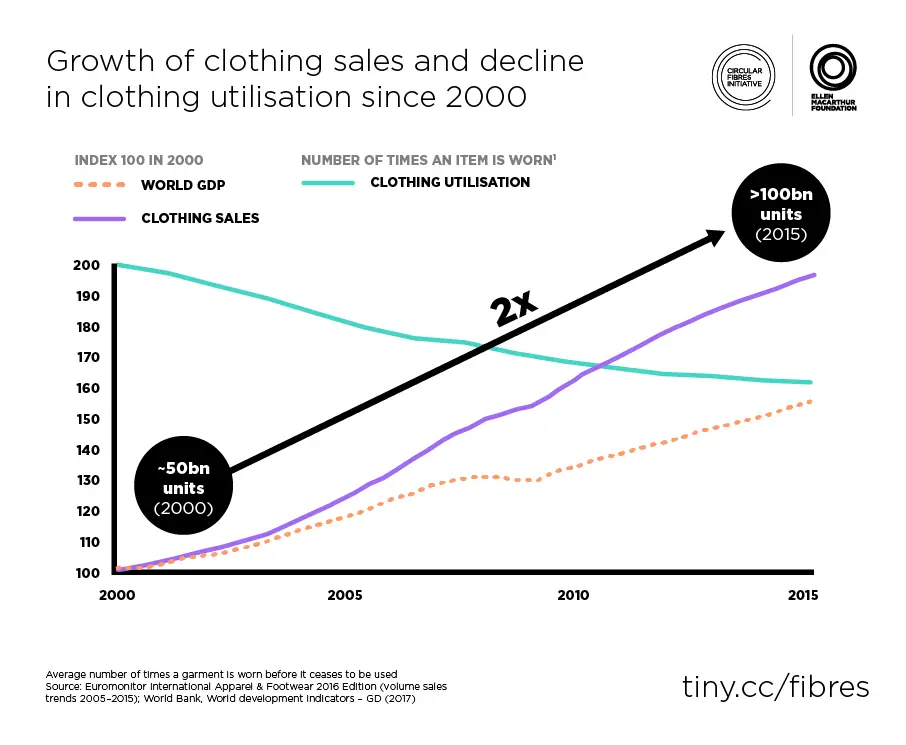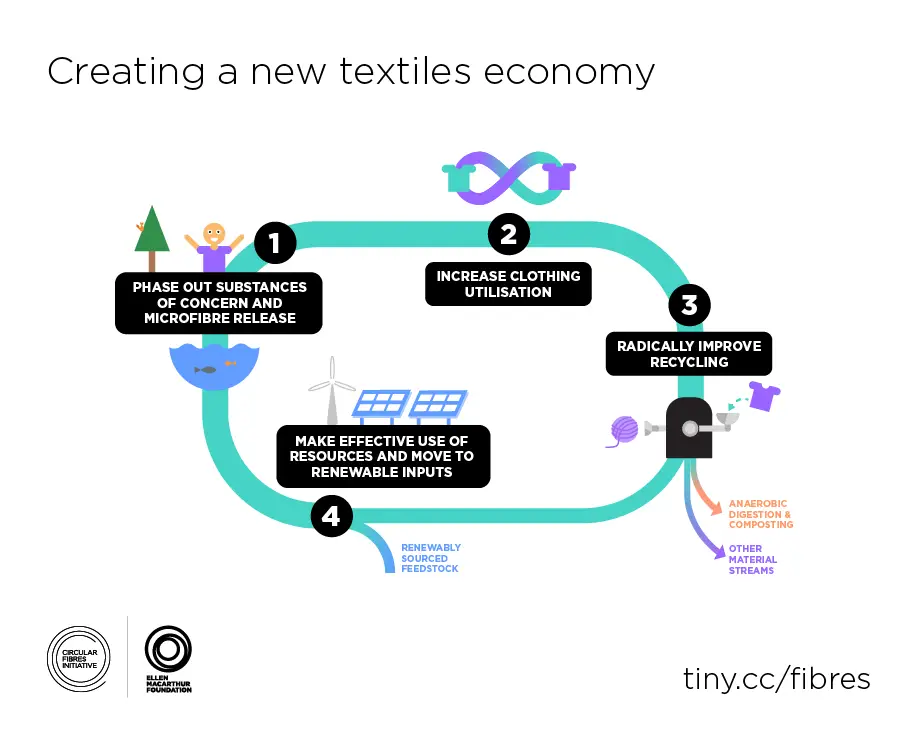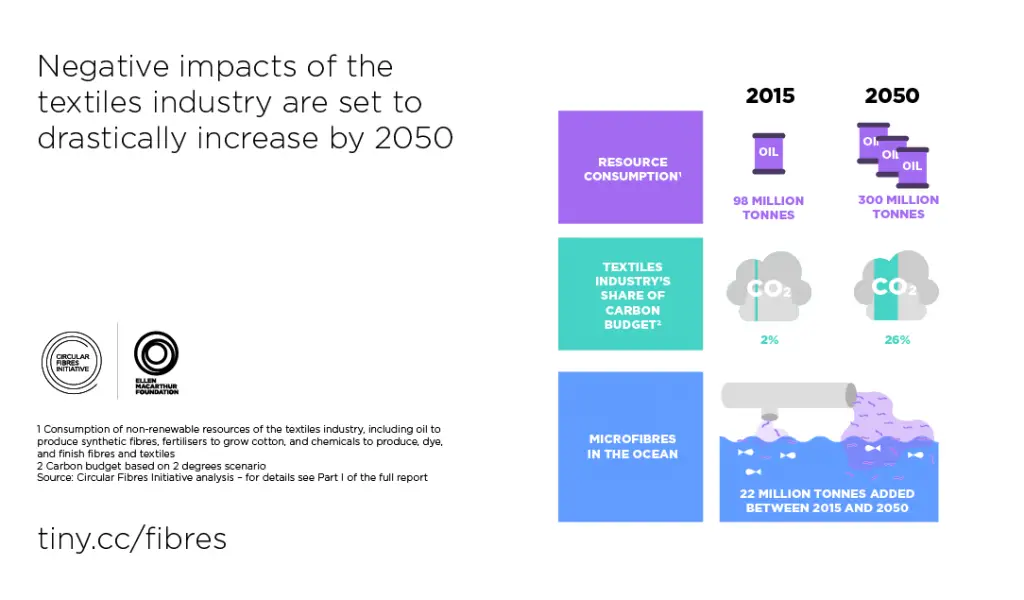Table of Contents Show
What is Fast Fashion?
‘Fast fashion’ is a term used by fashion retailers and designers for designs that flow from catwalk to retail quickly; capturing current fashion trends and making them available to public.
Fast fashion trends are inspired from trends demonstrated in fashion weeks occurring around the world; especially in spring and autumn seasons.
Imagine you visit a fashion show and think ‘That’s a very nice dress!’ and you’d also be thinking how expensive it would be if you were to buy it from the designer.
A photographer seated beside you shoots the whole fashion show and shares it out into the world. Bulk manufacturers all around the world see those pictures to understand the fashion trends in a better way and make similarly-designed products in bulk, thereby reducing the price on consumer-end.
The next day when you’re strolling through the market, there’s a good chance you’ll see a similarly-styled dress on a mannequin; and quite cheap! Well, that’s the concept of fast fashion.
History of Fast Fashion
In 1880s, fashion was primitive and an extensive process. It required sourcing of materials such as leather and wool to prepare and hand-stitch them into garments for the consumer.
However, the industrial revolution also revolutionized the fashion industry by integrating technology such as automated sewing machines, textile machines, readymade clothing factories and allowing for mass production of clothes.
This resulted in clothes becoming cheaper, easier, and quicker to make and distribute around the world.
Local dress makers started to emerge and cater middle-class income families. Such operations led to development of sweatshops that would provide the basis of modern clothing production. The fashion industry started to produce and market clothes throughout the year in all seasons.
The term ‘Fast Fashion’ was coined by New York Time to praise ZARA when they landed in New York in 1900s and proved how they could have a dress designed and in a retail store within 15 days.
Designers would make designs a year in advance to be chosen as first trends in the market for mass production.
Almost all the players in the fast-fashion market tried their best to keep the prices low, and to provide the consumer with the current trends and designs at an affordable cost with the best quality.
This is what fast fashion is all about, keeping up with fashion trends and making them available to public at affordable prices.
Environmental Impact of Fast fashion
1. Pollution
Producing fast fashion products to supply more than a billion products every day is a process which has heavy impacts on the environment.
Bulk production and lower production costs meant that fast fashion brands had to cut corners in terms of sustainability and the quality of dyes being used in textiles.
This made fast fashion industry the second-largest polluter of clean water globally, giving a close competition to intensive agriculture industry.
Now, agriculture industry produces food which feeds hungry people. All fast fashion brands do is promote consumerism and pushes people to buy new clothes every season!
The production and distribution of garments, crops, and fibers used in fashion are a source of all sorts of environmental pollution including water, air and land pollution.
When it comes to Air Pollution; Fast Fashion Industry produced 1.2 billion tons of CO2 equivalents in 2019! –World Resource Institute. This is higher than international air travel and shipping combined.
Water Pollution? 20% of global wastewater produced comes from the fast fashion industry.
Water Conservation? Forget it. Fast Fashion Industry used up 80 billion cubic meters of freshwater in 2015.
2. Cloth Waste Accumulation
The amount of garments purchased by Americans has tripled since 1960, the following infographic tells you more about that. The surge in demand has led to increased use of resources with speedier production and distribution of clothing products.
This leads to an obviously enormous impact on the environment, shown by this image.

Every year the world goes on to consume 80 billion items of clothing; those clothes contribute to waste accumulation. These clothes may be discarded for any number of reasons; they may be torn, may not fit, or taking up to much space in the closet and especially due to constantly changing fashion trends.
As the clothing products get cheaper, more people can afford to buy relentlessly; further contributing to waste with higher demand.
Cloth waste due to fast fashion has always been one of the major concerns faced by the environment. The Environmental Protection Agency (EPA) stated that in 2013 alone, 15.1 million tons of clothing waste was produced. This increased to 92 million in 2015! This is because those ‘out-of-trend’ clothes end up in landfills 85% of the times.
3. Use of Toxic Chemicals
Textile production uses about 3500 different chemicals; many of them quite toxic.
Chemicals used in production such as dyes can leach into the ground from these clothes in landfills. Fast fashion means lower production costs which are achieved by compromising on resources like dye quality.
You might think the solution to the tremendous amount of waste in landfills produced by fast fashion clothing is to burn them. This is a BAD IDEA! Burning these clothes releases very toxic chemicals into the air including Carbon Dioxide, further potentiating the greenhouse gas effect and exacerbating global warming and climate change.
4. Use of Fossil Fuels
With pressure from environmental activists and fortunate understanding of textile manufacturers; fast fashion industry partially shifted from using natural resources like cotton and wool.
Talking about cotton use in textile industry, here’s another fact for you. Cotton is one of the most resource-intensive crops out there, using enormous amounts of water, 11% of pesticides and 24% of insecticides made globally.
Back to natural resources; to meet demands of consumers, fast fashion started adapting inexpensive synthetic textile fibers like polyester and nylon. These synthetic textile fibers come from chemical reactions of coal and petroleum, most common fossil fuels.
As we all know, burning of coal and petroleum produces heavy amounts of air pollution consisting of carbon dioxide, sulfur dioxide, carbon monoxide, hydrogen sulfide and many more. This may impact global warming and climate change the same way burning of fast fashion clothes does.
5. Use of Polyester and Environmental impact of Micro-plastics
To put fuel to fire, polyester that is now being used more commonly in fast fashion is “non-biodegradable”. This means polyester cannot be broken down or can never be reused, making it very energy-intensive, without any net gain.
Washing polyester clothing may shed micro-plastics into the water systems which lead to micro-plastic pollution of nearby water bodies such as oceans. Fish may consume these micro plastics due to their small size have unprecedented effects.
These micro-plastics are not just limited to fishes; they make their way up the food chain into humans (and in higher quantities-read up ‘biomagnification’).
According to IUCN, Almost 2 million tons of micro-fibers end up in the ocean every year!
Solutions of these Environmental Impacts

1. Recycling
Only 1% of clothing products ever made are recycled. Various fashions companies are now working in order to decrease the carbon footprint caused by the industry.
Recycling programs have been created by various companies such as H&M, Viletex. The programs provide consumers with bins allowing easy disposal of unwanted garments that will eventually be converted into insulation and carpet padding, as well as be used to make new garments.
Did you know? Looking at current recycling rates, it will take us 12 years to recycle what the fashion industry makes in 48 hours!
2. Better Quality Control
Companies have made quality control measures to make use of sustainable and organic dyes. They have also implemented various measures to reduce the amount of dyes released into water ways, thereby reducing water pollution.
3. Solving Sizing issues to Reduce Wastage
Many fast fashion brands have also started using algorithmic technology to solve sizing issues, providing accurate sizes and recommendations to reduce environmental impact on returns. 3D designs are being implemented by companies like H&M to help cut waste whereas AI can be used to produce custom garments from specific stores.
4. Implement Better Design Strategies
Futurelearn has created many courses that create designs strategy and techniques to make fast fashion more sustainable. These include craft preservation, minimal seam construction, zero waste pattern cutting, design for disassembly, and transformation.
5. Embracing Renewable Energy
Textile industry uses enormous amounts of power to run those humungous machines. Most of this power comes from fossil fuels which need to be phased out. Using solar power, wind energy or hydropower as alternatives can work very well!
What can you do to make fast fashion more sustainable?
Here are 10 ways for you to be more sustainable while shopping.
- Buy Less, Buy Better. Quality over quantity.
- Buy used in-place of new clothes.
- Be informed about what you’re buying!
- Integrate Functionality and your Personal Style.
- Keep clothes for longer; who knows when you might need them?
- Swap clothes with your friends.
- Do not buy more to donate more; that’s a myth.
- Don’t believe in circular fashion, lies!
- Support sustainable clothing brands.
- Buy local-made to avoid shipping emissions.
Scary Future of Fast Fashion
Fast fashion industry is going strong! If they continue on this way, we’d be drowning in landfills of clothes very soon. Here’s an infographic to show you other predictions about the environmental impact of Fast Fashion.

If fashion industry (mainly fast fashion) is made more sustainable, the environmental impact can be greatly reduced. Let’s all more considerate to our Great Green Earth!






